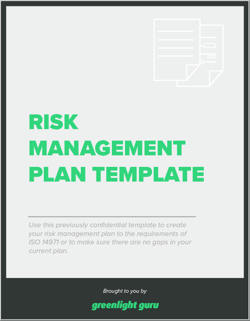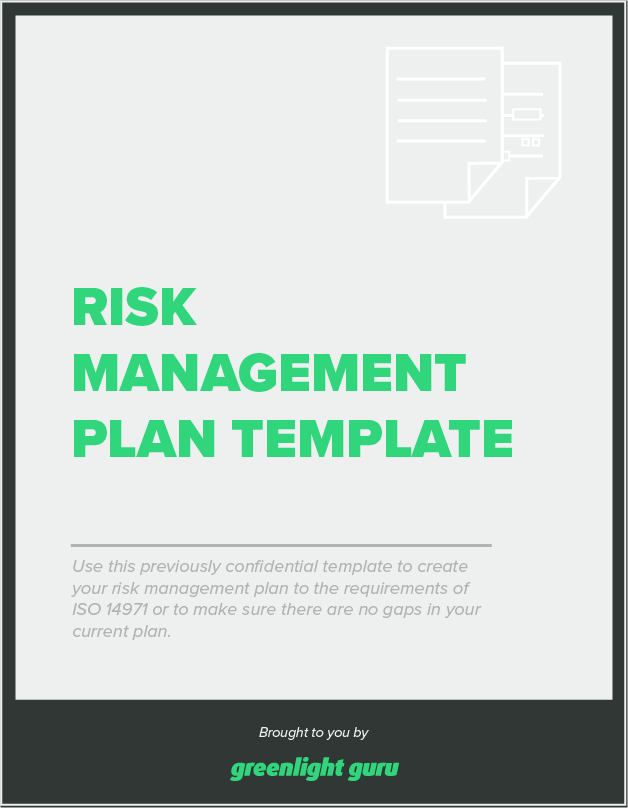3 Tips For Incorporating Risk Management During Medical Device Product Development

Medical device product development and risk management are often treated as entirely separate processes. Sure, there is usually acknowledgement and understanding that these two processes are related. But it is important to realize that product development and risk management are more than just related.
In fact, these processes both have the same overall purpose and intent: to help make sure medical devices are designed, developed, and manufactured to be safe and effective.
That’s why I wanted to provide you with three hugely helpful tips for incorporating risk management throughout the product development processes.
How to integrate risk management in medical device product development
Set the stage for medical device risk management with a clearly defined intended use statement
If you’re looking to integrate risk management into your entire medical device development approach, why not start at the beginning?
Though it only comprises a few short sentences, your intended use statement is really the gateway to your device’s entire lifecycle. This definition will be used heavily in determining a regulatory pathway, establishing user needs, directing product development, and setting the proper design controls.
But it also should be the starting point for your approach to risk management. In fact, defining the scope of your product risk management is impossible without an intended use statement.
That’s because an intended use statement allows you to identify hazards and hazardous situations pertaining to the use of your medical device. From there, you’ll be able to analyze, evaluate, assess, and control risks of your medical device, all thanks to the intended use statement.
Another significant impact of the intended use statement is its application in establishing a risk management plan. This planning document describes foreseeable risk management activities throughout a product lifecycle.
In order for the plan to be effective and actionable, stakeholders should thoroughly define the roles and responsibilities, as well as the personnel assigned to the risk management team. Here, manufacturers can leverage their intended use statement to establish the scope to which risk management activities will be necessary.
The risk management plan also includes criteria for your medical device’s risk acceptability, which should be commensurate with the intended use. That’s why putting in the proper time and effort in generating this definition is of utmost importance.
Leverage the risk management process to drive product development
Just how user needs and design controls should “flow” into one another, the same can absolutely be said about risk management and product development.
Rather than treating the process like a checkbox you’re looking to tick, your medical device risk management system can be used as a tool to improve development activities and create an overall greater product.
The international standard ISO 14971 defines risk as a total product lifecycle process, and identifies seven high-level steps to adopting this risk-based approach. Those are:
-
Risk Management Planning - identifying the timing and risk activities planned.
-
Risk Analysis - taking the intended use of your product and identifying hazards and hazardous situations. Once identified, you then estimate the risks of each hazardous situation.
-
Risk Evaluation - determining acceptability of the estimated risks.
-
Risk Control - identifying ways to reduce risks to an acceptable level and verifying the controls are effective.
-
Overall Residual Risk Acceptability - evaluating the risks of the entire, finished device.
-
The Risk Management Report - capturing the results of the risk activities.
-
Production / Post-production - ensuring you have provisions in place after market release and design transfer to feed back into risk management.
Rather than viewing these activities as a linear progression, I’d like to suggest you treat your risk management process in a more cyclical manner during product development.
Rather than creating a risk management plan one day, followed by a risk analysis, and then risk evaluation next, use risk management as a tool to help you.
Take a first pass from “beginning to end” near the start of a product development process. Use the risk estimates, evaluation, and controls as a means to help drive your medical device product development efforts. As product development tasks and activities are checked off the list, revisit the risk management activities to confirm and update.
Doing so will mean that you are truly taking a risk-based approach with product development.
Keep risk management and design controls connected at the hip
The relationship between design controls and risk management is a close-knit one. Even looking at their most basic definitions, the similarities are rather striking.
Design controls are intended to demonstrate that a medical device is safe for use, specifically by providing empirical evidence that the product has been:
-
Designed to address the needs of users and patients.
-
Designed to meet inputs and requirements.
-
Proven to meet applicable standards.
-
Tested to meet performance criteria.
Risk management identifies, evaluates, analyzes, assesses, and mitigates potential product issues, simply from a slightly different perspective.
Integrating risk management into your design controls and development activities can be accomplished by linking both sides of this coin. Even at a cursory glance, there are several activities that could benefit immediately from the addition of risk management:
-
Project Planning - A risk management plan should describe the strategic approach to identifying and controlling risk in the product development life cycle. This plan could be a part of the product development or project management plan.
-
Design Input - Existing safety standards and safety requirements identified in risk assessments are key design inputs.
-
Design Output - Risk reduction measures introduced into product design are essential design outputs.
-
Design Verification - Design verification should affirm that all safety requirements are covered by the risk reduction measures in the design.
-
Design Validation - Design validation should demonstrate that all safety requirements can be consistently met.
As with all risk management activities, remember that documentation is an ultimate key to success.
How the right QMS can make or break your medical device risk management
Risk management should be an all-or-nothing process, and applying it to your entire organization’s products is a huge undertaking without the right quality management solution.
By integrating the risk management process into your entire QMS, you can fix issues that expose you to risk when it’s less expensive and time-consuming to do so. Risk management will no longer be a discouraging process with little visibility.
With Greenlight Guru’s Risk Management Software, you can link risk management to your product development design control traceability matrix, toggle between design and risk with a single click, and use risk management together with design controls to mitigate issues before they become problems.
Ready to get started? Contact us today for your free demo →
Jon Speer is a medical device expert with over 20 years of industry experience. Jon knows the best medical device companies in the world use quality as an accelerator. That's why he created Greenlight Guru to help companies move beyond compliance to True Quality.
Related Posts
How To Navigate the Difficult Road of Medical Device Product Development While Avoiding the Common Pitfalls
[VIDEO] Integrating Design Controls & Risk Management To Streamline Product Development (Make Phase)
The Ultimate Guide To Design Controls For Medical Device Companies
Get your free PDF
Risk Management Plan Template











